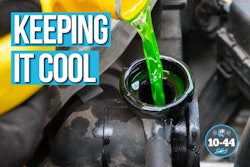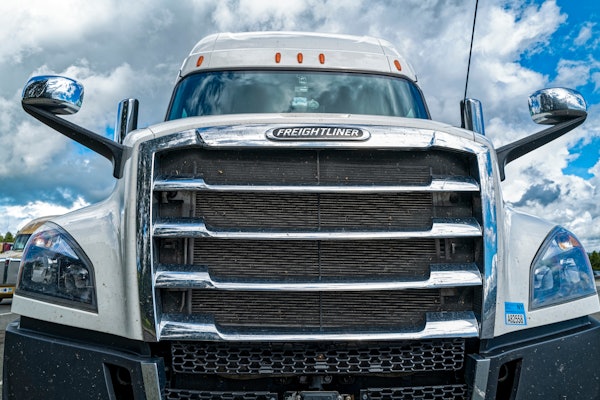Designing vehicles for the production line focuses on reducing the number of parts and optimizing assembly sequences to minimize installation labor. The ideal vehicle would contain the fewest number of parts.
OEMs have worked for years to create sub-assemblies at suppliers that come into the factory and quickly bolt onto the truck. Engines come in largely pre-assembled, and then go through further subassembly that includes the transmission and other accessories. The main production line only needs to drop the engine into the chassis. Cabs and sleepers are sub-assembled as well, so they can just drop onto the chassis as nearly complete units.
Minimizing costs for first assembly is a major objective for factory managers. However, once the vehicle is in the field, all those cost simplifications built in at the factory become cost multipliers when vehicles have to be repaired. Items like complex castings that have incorporated multiple functions become costly replacements in the field. Complex assemblies that easily dropped into the chassis on the production line may require significant labor to be extricated in the service bay.
Balancing factory first-time assembly needs versus field service needs requires real-world experience. This is one of the significant differences I see between start-ups and established truck and engine OEMs.
It would be great if nothing ever failed on a vehicle once it leaves the factory. It would be great if vehicles never had accidents or never needed to be repaired. Unfortunately, the real-world is not that generous.
Failure is why all vehicles have warranties. Accidents are why all vehicles are required to have insurance. It’s naïve to believe failures and accidents don’t happen. Designers need to plan for servicing the vehicle after it leaves the factory. They need to audit warranty claims to figure out what is more likely to need replacement in the field. They need to talk to fleets about service pain points.
This is why the Vehicle Maintenance Reporting Standards (VRMS) system is so critical to understanding the life of a vehicle. The Technology & Maintenance Council (TMC) has an overview of VRMS. The AI tool Co-Pilot summarizes VRMS as, “a universal coding system used to manage fleet information efficiently. Developed in 1970, VMRS provides a single, concise coding convention for tracking assets and analyzing maintenance operation costs within fleets.”
Improvement generally always starts with measurement. Knowing where you are (your baseline) is how to put improvement in perspective. VRMS is about data — the critical data of what fails and when. Tied to warranty claims, it readily can be used to estimate cost for labor and parts.
Start-ups that have just begun manufacturing vehicles do not have years of data experience that older established OEMs have. They often don’t have a network of experienced service providers to tap for information. They don’t have access to years of insurance claim information. They don’t have knowledge of how to support vehicles over their entire lifetimes, rather than just the first three years.
I’ve talked with several people at Cummins over the years. Cummins is an example of a company that supports vehicles worldwide in the field, some of which are more than 20 years old. Think about that: they have parts for trucks that were built before there were Apple iPhones or iPads. Parts that pre-date ecommerce. Integrated circuit (IC) chips by Intel and AMD in 2000 operated at between 500 and 600 MHz and the Pentium 4 was released in 2001, operating at 1 GHz. Remember Nokia flip phones and Blackberries? Cummins supports engines that predate both of those.
Start-ups are starting from scratch. They can learn from history, but they don’t have history. They can “do it better” but they don’t have the foundational experience from which to measure. They have to build vehicles and support them past the warranty period. They will have to listen to vehicle owners and service center operators and ensure that feedback gets to the engineers so they can learn how to better design new products for the real world.
Making the least expensive vehicle to assemble the first time is different from making the least expensive vehicle to support over its life.
As the start-ups get their feet wet in the real-world, I wonder how well they will listen to the insurers, the service centers and the fleets. If they are smart, they will listen very closely.











